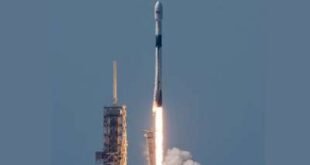
In a remarkable feat of space exploration, India’s Chandrayaan-3 has achieved a historic soft landing near the moon’s south pole, positioning India as a pioneering member of the elite space club. The Indian Space Research Organisation (ISRO) celebrated the success, making India the first country to land a spacecraft near the moon’s southernmost region.
The Chandrayaan-3 mission holds immense significance after India’s previous attempts encountered challenges. Chandrayaan-2, India’s second lunar mission, faced a partial failure when its lander crashed on the moon’s surface in September 2019. Learning from these setbacks, the ISRO team meticulously worked to ensure Chandrayaan-3’s success.
S Somanath, Chief of ISRO, shared insights into the mission’s journey. He revealed that Chandrayaan-3’s entire instrumentation was meticulously designed for a successful landing in the challenging south pole region, a feat unmatched by any other spacecraft. Explaining the choice of the south pole, Somanath stated, “The south pole offers a wealth of scientific possibilities, including the study of lunar water ice and minerals, as well as other physical processes.”
The mission’s significance lies in its potential to advance lunar exploration knowledge. The moon’s south pole, known for its treacherous terrain of craters and trenches, presents scientists with opportunities to explore valuable resources, such as water ice. Chandrayaan-3’s findings are expected to provide insights into the moon’s geological composition and the presence of vital resources.
Chandrayaan-3’s successful landing signifies a culmination of rigorous efforts and revisions. Following Chandrayaan-2’s hard landing, ISRO undertook a comprehensive review of the mission’s design and execution. Somanath detailed the meticulous planning that spanned over two years, during which rigorous testing and improvements were carried out.
However, the journey wasn’t without its challenges. The COVID-19 pandemic disrupted ISRO’s plans, impacting their programs. Despite the setbacks, ISRO demonstrated resilience by continuing with rocket launches. Post-pandemic, the organization swiftly regained momentum, emphasizing its commitment to advancing space exploration.
Over the next two weeks, Chandrayaan-3’s six-wheeled rover will conduct experiments on the lunar surface. Both the Vikram lander and Pragyan rover have a mission life of one lunar day, equivalent to 14 Earth days. The lander carries five payloads designed for specific tasks on the moon, further enhancing the scientific scope of the mission.
Chandrayaan-3’s success underscores India’s growing prowess in space technology and exploration. As ISRO navigates new frontiers and leverages the wealth of scientific data from the mission, the world eagerly anticipates the insights that will emerge from the moon’s enigmatic south pole.
In a field where challenges are inherent, Chandrayaan-3 stands as a testament to human ingenuity, perseverance, and the spirit of exploration.
Sources By Agencies
 Digital Scoop India Official Platform of Digital Scoop India Featuring Latest & Best News #Articles #Bytes #Entertainment #DigitalScoopMagazine
Digital Scoop India Official Platform of Digital Scoop India Featuring Latest & Best News #Articles #Bytes #Entertainment #DigitalScoopMagazine


